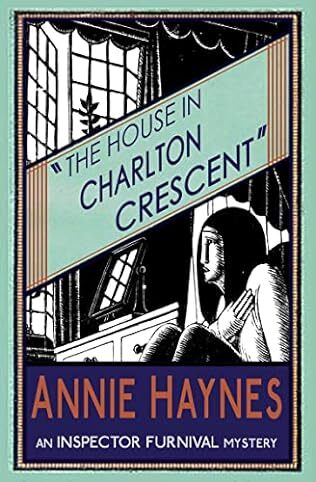The House In Charlton Crescent

A review of The House in Charlton Crescent by Annie Haynes – 231003
Originally published in 1926 and reissued by Dean Street Press, this is the second in Annie Haynes’ series featuring Inspector Furnival and, despite its age, it is rather good. The murder victim is an irritable and rich old woman, the two qualities seem to go hand in hand, Lady Anne Daventry, who has the added indignity of not only discovering that her pearls have been stolen but is also stabbed in a crowded room with a dagger which belonged to one of her relatives.
Along with Lady Anne, four people are examining the dagger, John Daventry, Dorothy Fyvert, Margaret Balmaine, and Bruce Cardyn, when a pale face appears outside the window. In the confusion caused by the face at the window, someone takes the opportunity to stab Lady Anne. Soames, the butler, is on hand and discovers what has happened to her ladyship. As no one had the time to enter the room, commit the foul deed, and then leave undetected while everyone’s attention was diverted, the inevitable conclusion is that one of the five must have done it but who?
Prior to that Lady Anne Daventry had grounds for believing that someone was trying to poison her and contacted a private investigation company to give her protection. Bruce Cardyn took on the role and arrived at Lady Anne’s house in Charlton Crescent as her secretary, a fortuitous vacancy having arisen as the last incumbent, David Branksome, had left in a hurry a week or so earlier, always a suspicious move when dastardly deeds are afoot. However, Branksome, whose appearance has more than a passing resemblance to Sayers’ Lord Peter Wimsey, is nowhere Charlton Crescent when the murder occurred.
Perhaps the most fascinating character in the book is Cardyn. On one level he has catastrophically failed in his assignment of protecting Lady Anne’s life but as we learn more about him, we discover that there may be more than just sheer bad luck behind his failure. He has more than a passing interest in Margaret Balmaine and has met Dorothy Fyvert before, having rescued her from a burning building. He has his first major breakthrough when he realises that an actress by the name of Daisy Melville looks uncommonly like someone in the household.
Furnival arrives on the scene after the murder and while he is happy to receive information from Cardyn and work with him, the policeman leaves the amateur sleuth in no doubt that he is under as much suspicion as the others. Furnival ferrets away, there are several remarks that draw attention to his ferret-like characteristic which have earned him the sobriquet in the Yard, and realises that he has two distinct crimes to solve.
It is a tale where the identities and motives of several of the characters are not what they seem. The need to raise cash to avert impending financial disaster is a strong motive and while neither of the crimes are that difficult to solve, Haynes does her best in at least muddying the waters over the identity of the murderer until the end.
There is much to admire in this story and while some of the devices in the plot seem somewhat familiar, it is salutary to remember that Haynes was at the vanguard of the age of classic crime fiction and that where she went, others followed. She engages her readers with a simple style, throws enough conundrums and misdirection in to keep them on their toes, and produces an enjoyable piece of entertainment. You cannot quibble with that.



